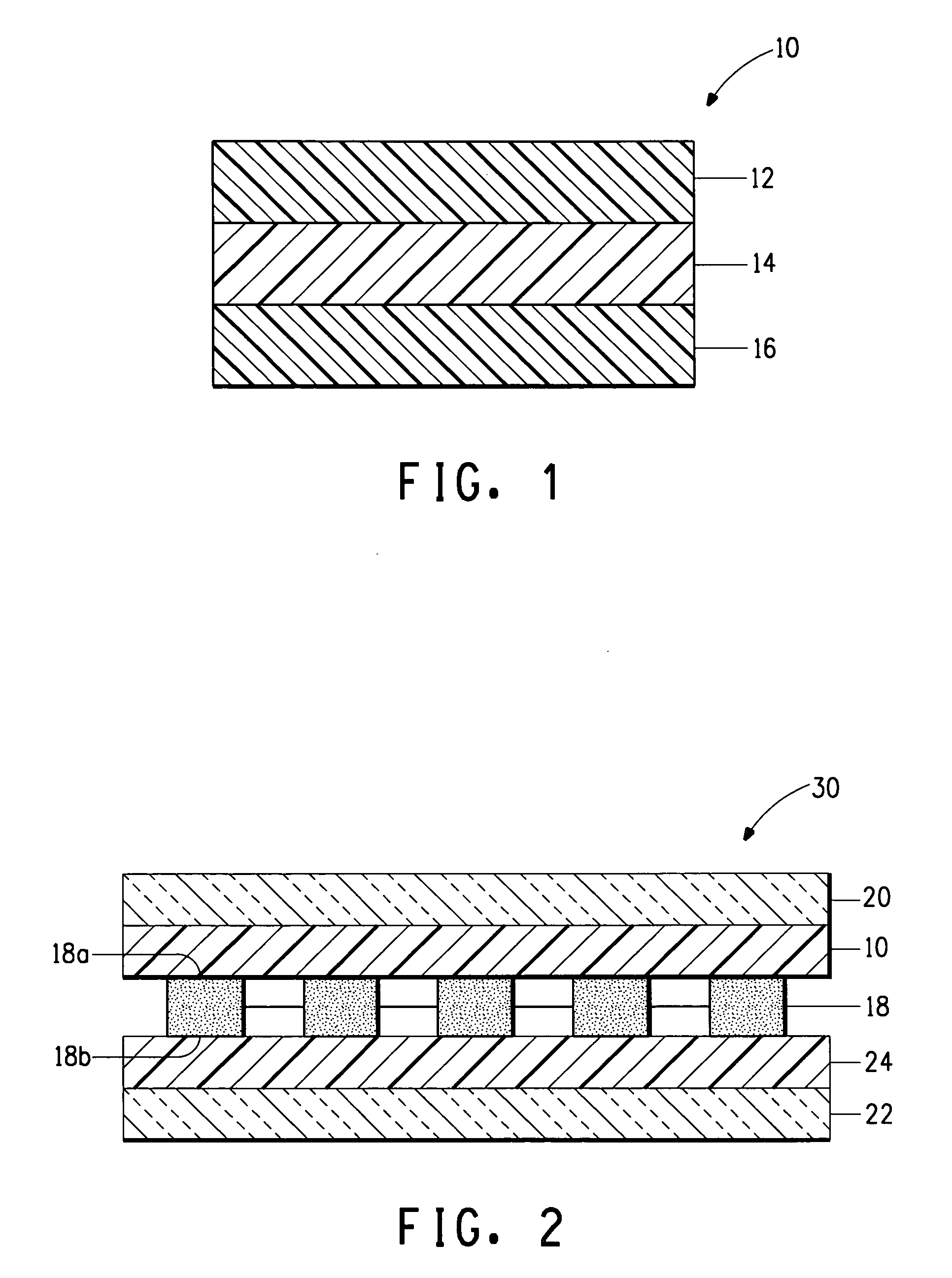Low modulus solar cell encapsulant sheets with enhanced stability and adhesion
- Summary
- Abstract
- Description
- Claims
- Application Information
AI Technical Summary
Problems solved by technology
Method used
Image
Examples
examples
[0098]The following Examples and Comparative Examples are intended to be illustrative of the present invention, and are not intended in any way to limit the scope of the present invention. The solar cell interconnections are omitted from the examples below to clarify the structures, but any common art solar cell interconnections may be utilized within the present invention.
Methods
[0099]The following methods are used in the Examples and Comparative Examples presented hereafter.
I. Embossed Sheet Structure:
[0100]Embossed sheet structures were prepared on a 24 inch width Sano multilayer co-extrusion line equipped with embossing rolls utilizing common art sheet formation processes. This essentially entailed the use of an extrusion line consisting of a twin-screw extruder with a sheet die feeding melt into a calendar roll stack. The calendar rolls have an embossed surface pattern engraved into the metal surface which imparts to varying degrees a reverse image of the surface texture onto t...
example 6
[0110]Example 6 was an embossed tri-layer sheet consisting of two 2 mil (0.05 mm) thick surface layers of lonomer 2 and one 16 mil (0.41 mm) thick inner layer of EBA 1. A series of 4 inch×4 inch laminate structures comprising the tri-layer sheet of Example 6 were then prepared. These laminate structures had the following compositions: glass / Example 6 / glass, fluoropolymer film / Example 6 / glass, aluminum sheet / Example 6 / glass, aluminum sheet / Example 6, and glass / Example 6.
example 7
[0111]Example 7 was an embossed tri-layer sheet consisting of two 4 mil (0.10 mm) thick surface layers of lonomer 2 and one 12 mil (0.30 mm) thick inner layer of EBA 1. A series of 4 inch×4 inch laminate structures comprising the tri-layer sheet of Example 7 were then prepared. These laminate structures had the following compositions: glass / Example 7 / glass, fluoropolymer film / Example 7 / glass, aluminum sheet / Example 7 / glass, aluminum sheet / Example 7, and glass / Example 7.
PUM
| Property | Measurement | Unit |
|---|---|---|
| Fraction | aaaaa | aaaaa |
| Length | aaaaa | aaaaa |
| Thickness | aaaaa | aaaaa |
Abstract
Description
Claims
Application Information
 Login to View More
Login to View More - R&D
- Intellectual Property
- Life Sciences
- Materials
- Tech Scout
- Unparalleled Data Quality
- Higher Quality Content
- 60% Fewer Hallucinations
Browse by: Latest US Patents, China's latest patents, Technical Efficacy Thesaurus, Application Domain, Technology Topic, Popular Technical Reports.
© 2025 PatSnap. All rights reserved.Legal|Privacy policy|Modern Slavery Act Transparency Statement|Sitemap|About US| Contact US: help@patsnap.com


